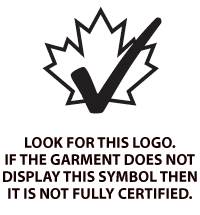About Us
Operating since 1928 in Winnipeg, Canada
MWG specializes in technical design, development and custom manufacturing of technical flame-resistant safety apparel for professionals in the electrical generating & transmission industry, mining, oil & gas, forest fire fighting, fire departments, construction trades and the Canadian Department of National Defence.
Through the development of proprietary flame-resistant and close relationships with professionals working in the electrical utility industry, MWG Apparel has built the world's most comprehensive collection of arc-rated safety apparel. Each unique piece has been developed and designed with the mission to keep workers safe and comfortable, creating safe and inclusive workplaces.
MWG ensures that all fabrics, components and design specifications included in the manufacture of our garments meet the required personal protective equipment (PPE) standards. These standards can be very involved and difficult to interpret - especially if you require multiple standards in your clothing (electric arc, flash fire and high visibility standards). Our safety experts and safety-focused design team are able to respond to your specific design needs and to provide garments that comply with the safety standards while keeping you warm and comfortable.

MWG personnel actively participate on many of the safety committees and boards. Additionally our PPE conforms to the standards below as required.
Electric Arc Flash:
- CSA-Z462-12 Safe Work Practices for Electrical Workers (Strategic Steering Committee member)
- CAN/ULC-S801-10 Safe Work Practices for Utility Workers (Voting Member)
- NFPA 70E-2012 Standard for Electrical Safety in the Workplace
- ASTM F1506-10a Standard Performance Specification for Flame Resistant Textile Materials for Wearing Apparel for Use by Electrical Workers Exposed to Momentary Electric Arc and Related Thermal Hazards
- ASTM F1891-12 Standard Specification for Arc and Flame Resistant Rainwear
Flash Fire:
- CAN/CGSB 155.20-2000 Workwear for Protection Against Hydrocarbon Flash Fire (Technical advisory committee and voting member)
- CAN/CGSB 155.22-2014 Fireline Workwear for Wildland Firefighters (Technical advisory committee and voting member)
- NFPA 2112 Standard on Flame-Resistant Garments for Protection of Industrial Personnel Against Flash Fire, 2012 Edition
- NFPA 2113 Standard on Selection, Care, Use, and Maintenance of Flame-Resistant Garments for Protection of Industrial Personnel Against Flash Fire, 2012 Edition
- ASTM F 2733-09 Standard Specification for Flame Resistant Rainwear for Protection Against Flame Hazards
High Visibility
- CSA Z96-09 High-Visibility Safety Apparel
- Strategic Steering Committee of Occupational Health & Safety (All work and safety issues in Canada go through these committees)
MWG Apparel is able to meet, maintain and surpass the quality standards of regulatory bodies such as the Canadian General Standards Board (CGSB) and those of the most demanding customers. MWG Apparel Corp. has been unionized under the auspices of Workers United, Local 459 since 1947.
Canadian General Standards Board Certification
Certification provides the assurance that all the components including fabrics, thread and fastening systems have been tested by third party accredited labs and have met the criteria for protection CAN/CGSB 155.22-2014 (Fireline Workwear for Wildland Firefighters). Only components that have had the lab test reports verified by CGSB on an annual basis can be deemed to be listed as certified.
MWG Apparel Corp. is CGSB certified to the above standard and can proudly display the CGSB label in our clothing. In comparison, other garment manufacturers state that their clothing “Meet the performance requirements of CAN/CGSB 155.22-2014.” There has been no verification of this claim and the only person declaring that the garment meets the standard is the company sewing the label into the garment, with NO third party verification. These other garment manufacturers merely rely on the fact that fabric mills test their fabric in accordance with the CGSB criteria and then leave it to you the purchaser and wearer of protective clothing to decide if the garment meets the standard or not.

